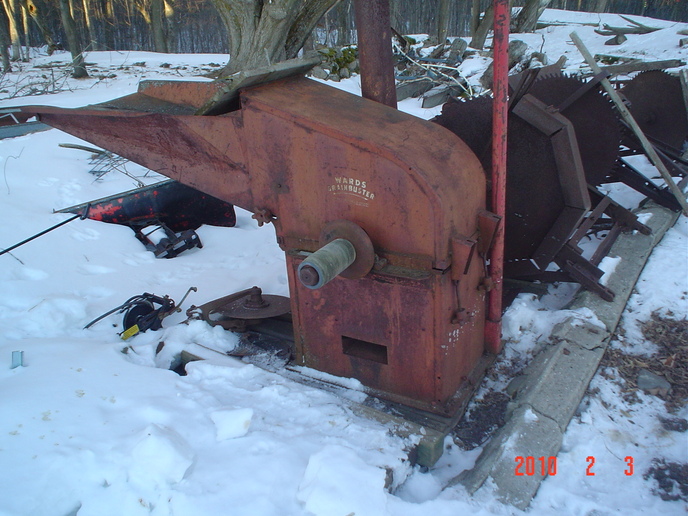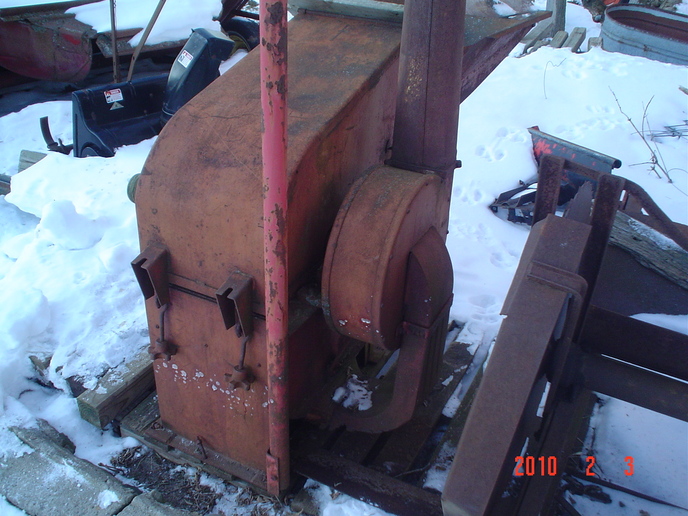ryanwheelock
Member
I've got a Wards Grainbuster and searched it in the archives and found very little info about it. The tag on the side says, Model No. 74HM-M15-A. From reading thinkin its a model M-15.
My question is was this originally made to grind shelled corn? cobbed corn? read someone would grind alfalfa hay for chicken feed. I know it depends on the screens inside it. Also did the ground feed come out the tube on top of the blower or out the other side on the bottom opening??
On the side its says it needs 2000 or 2200 rpms, (dont remember which it was) to run it. Would one of my Farmalls be able to run it being only 1815 rpms or lower? Might depend on how much feed is put in at a time.
I like to use the older equipment and was gonna use it to grind a little corn for a few beef steers and maybe try that alfalfa hay for my chickens. Archives said alfalfa hay ground up gave them firmer yokes in the eggs.
Ryan in Northern Mich


My question is was this originally made to grind shelled corn? cobbed corn? read someone would grind alfalfa hay for chicken feed. I know it depends on the screens inside it. Also did the ground feed come out the tube on top of the blower or out the other side on the bottom opening??
On the side its says it needs 2000 or 2200 rpms, (dont remember which it was) to run it. Would one of my Farmalls be able to run it being only 1815 rpms or lower? Might depend on how much feed is put in at a time.
I like to use the older equipment and was gonna use it to grind a little corn for a few beef steers and maybe try that alfalfa hay for my chickens. Archives said alfalfa hay ground up gave them firmer yokes in the eggs.
Ryan in Northern Mich



